Related Research Articles

The turbofan or fanjet is a type of airbreathing jet engine that is widely used in aircraft propulsion. The word "turbofan" is a portmanteau of "turbine" and "fan": the turbo portion refers to a gas turbine engine which achieves mechanical energy from combustion, and the fan, a ducted fan that uses the mechanical energy from the gas turbine to force air rearwards. Thus, whereas all the air taken in by a turbojet passes through the combustion chamber and turbines, in a turbofan some of that air bypasses these components. A turbofan thus can be thought of as a turbojet being used to drive a ducted fan, with both of these contributing to the thrust.
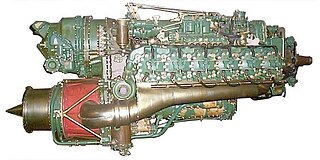
The Napier Nomad is a British diesel aircraft engine designed and built by Napier & Son in 1949. They combined a piston engine with a turbine to recover energy from the exhaust and thereby improve fuel economy. Two versions were tested, the complex Nomad I which used two propellers, each driven by the mechanically independent stages, and the Nomad II, using the turbo-compound principle, coupled the two parts to drive a single propeller. The Nomad II had the lowest specific fuel consumption figures seen up to that time. Despite this the Nomad project was cancelled in 1955 having spent £5.1 million on development, as most interest had passed to turboprop designs.

The Pratt & Whitney Canada PT6 is a turboprop aircraft engine produced by Pratt & Whitney Canada. Its design was started in 1958, it first ran in February 1960, first flew on 30 May 1961, entered service in 1964 and has been continuously updated since. It consists of two basic sections: a gas generator with accessory gearbox and a free power turbine with reduction gearbox, and is often seemingly mounted backwards in an aircraft in so far as the intake is at the rear and the exhaust at the front. Many variants of the PT6 have been produced, not only as turboprops but also as turboshaft engines for helicopters, land vehicles, hovercraft, and boats; as auxiliary power units; and for industrial uses. By November 2015, 51,000 had been produced, had logged 400 million flight hours from 1963 to 2016. It is known for its reliability with an in-flight shutdown rate of 1 per 651,126 hours in 2016. The PT6A covers the power range between 580 and 1,940 shp while the PT6B/C are turboshaft variants for helicopters.
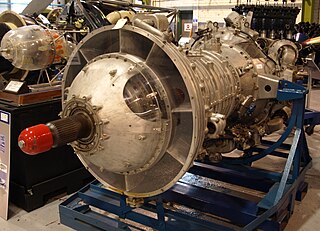
The Rolls-Royce RB.39 Clyde was Rolls-Royce's first purpose-designed turboprop engine and the first turboprop engine to pass its civil and military type-tests.
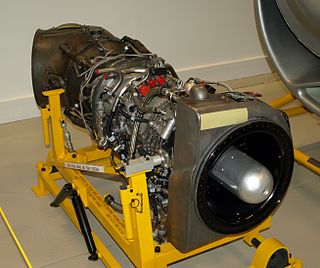
The Rolls-Royce Gnome is a British turboshaft engine originally developed by the de Havilland Engine Company as a licence-built General Electric T58, an American mid-1950s design. The Gnome came to Rolls-Royce after their takeover of Bristol Siddeley in 1968, Bristol having absorbed de Havilland Engines Limited in 1961.
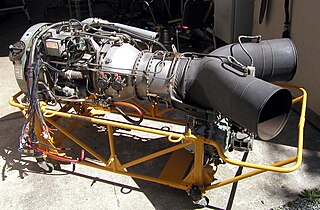
The Bristol Siddeley Nimbus, later known as the Rolls-Royce Nimbus, was a British turboshaft engine developed under license by Blackburn Aircraft Ltd. from the Turbomeca Turmo in the late 1950s. It was used on the Westland Scout and Westland Wasp helicopters.
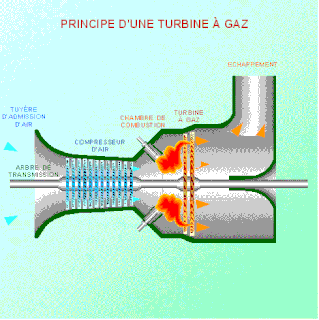
As the name suggests, gas turbine engine compressors provide the compression part of the gas turbine engine thermodynamic cycle. There are three basic categories of gas turbine engine compressor: axial compressor, centrifugal compressor and mixed flow compressor. A fourth, unusual, type is the free-piston gas generator, which combines the functions of compressor and combustion chamber in one unit.

The Rolls-Royce Gem is a turboshaft engine developed specifically for the Westland Lynx helicopter in the 1970s. The design started off at de Havilland and was passed to Bristol Siddeley as the BS.360. When Rolls-Royce bought out the latter in 1966, it became the RS.360.

The Allison Model 250, now known as the Rolls-Royce M250, is a highly successful turboshaft engine family, originally developed by the Allison Engine Company in the early 1960s. The Model 250 has been produced by Rolls-Royce since it acquired Allison in 1995.

The CFE738 is a small turbofan engine aimed at the business/commuter jet market manufactured by the CFE Company, and is used on the Dassault Falcon 2000.

The Turbomeca Astazou is a highly successful series of turboprop and turboshaft engines, first run in 1957. The original version weighed 110 kg (243 lb) and developed 240 kW (320 shp) at 40,000 rpm. It was admitted for aviation service on May 29, 1961, after a 150-hour test run. The main developing engineer was G. Sporer. It was named after two summits of the Pyrenees.

The Turbomeca Turmo is a family of French turboshaft engines developed for helicopter use. A descendant of the Turbomeca Artouste, later versions delivered up to 1,300 kW (1,700 shp). A turboprop version was developed for use with the Bréguet 941 transport aircraft.
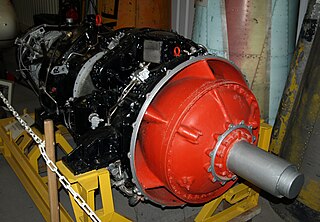
The Napier Eland was a British turboshaft or turboprop gas-turbine engine built by Napier & Son in the early 1950s. Production of the Eland ceased in 1961 when the Napier company was taken over by Rolls-Royce.
The Fiat Model 7002 was a 1960s Italian general-purpose helicopter with a tip jet driven rotor built by Fiat Aviazione. Only one aircraft was built.

The Boeing T50 was a small turboshaft engine produced by Boeing. Based on Boeing's earlier Model 500 gas generator, the T50's main application was in the QH-50 DASH helicopter drone of the 1950s. An up-rated version designated Model 550 was developed to power the QH-50D and was given the military designation T50-BO-12.
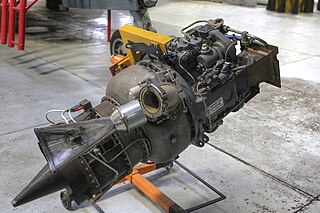
The Turbomeca Palouste is a French gas turbine engine, first run in 1952. Designed purely as a compressed air generator, the Palouste was mainly used as a ground-based aircraft engine starter unit. Other uses included rotor tip propulsion for helicopters.

The Napier Oryx was a British gas-turbine engine designed and built by Napier in the early 1950s for the Percival P.74 tip jet-powered helicopter project. The P.74 was unsuccessful and it and the Oryx were cancelled.

The Klimov GTD-350 is a Soviet gas-turbine turboshaft engine intended for helicopter use. Designed in the early 1960s by the Isotov Design Bureau the engine was later produced by Klimov and PZL, production ending in the late 1990s.
The Turbomeca Orédon was a small French turbo-shaft / Auxiliary Power Unit (APU) engine produced by Turbomeca in the late 1940s.

The MAN Turbo 6022 is a German gas turbine turboshaft engine for helicopter use. Designed in the early 1960s by BMW the engine powered the third prototype of the MBB Bo 105 on its maiden flight in December 1967.
References
Notes
- 1 2 3 4 5 "Fiat's New Helicopter - Notes on the 7002 and its powerplant". Flight International : 110. 24 January 1958.
- 1 2 "Fiat 7002 flies". Flight International : 138. 3 February 1961.
- ↑ Taylor, John W.R. FRHistS. ARAeS (1962). Jane's All the World's Aircraft 1962-63. London: Sampson, Low, Marston & Co Ltd.
| | This aircraft engine article is missing some (or all) of its specifications. If you have a source, you can help Wikipedia by adding them. |